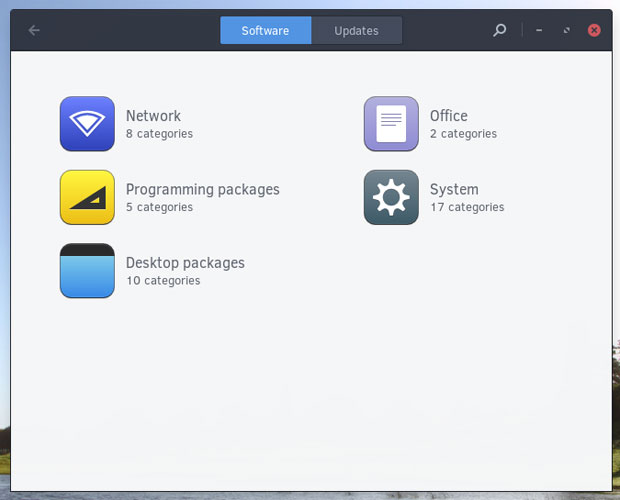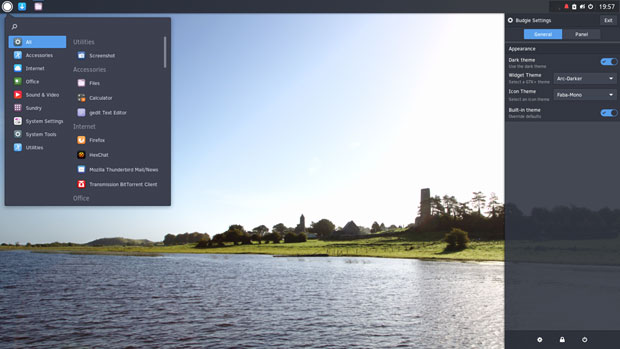![]()
TheSolus Project is much like the little engine that still can’t function.
Version 1.0 was released last month as the first stable release from the twice-revamped Linux distro. Solus is built from scratch for the x86_64 architecture around a rewritten Budgie homemade desktop environment.
Budgie is an open source project in its own right. It offers a simplified approach to implementing the look and feel of the older-style GNOME 2 functionality.
LinuxInsider last looked at the beta’s second release in July after developer Ikey Doherty had to rebrand the distro in anaming dispute over Solus Linux, the former SolusOS, now discontinued.
I viewed the Solus Project’s potential for growth fondly. I saw some merit in the developed alternative lightweight desktop environment integrated in the GNOME 2 framework.
If the Solus Project documentation did not label the release as a stable version, however, I would have thought it was still an early beta release. Version 1.0 does work out of the gate. It does little to impress beyond not crashing, however.
Budgie Bungled
I was more interested in the potential behind the Budgie desktop before the latest rewrite. The current release in Solus is the result of more than a dozen contributors on 2,000 package builds.
The Budgie desktop is too simple to encourage continued use. I was disappointed with its lack of development since I first looked at it.
This may be a case of how Budgie in integrated with GNOME within the Solus Project OS, however. I tried a few other distros that offer a Budgie desktop and found them much less limited.
Budgie at a Glance
One clear user trait in the Solus Project is its high-contrast theming option for users with visual impairments. Another nice idea is its custom package manager named “eopkg.”
The problem is a scarcity of things for the package manager to do. The software center is not well stocked. In fact, it would be an understatement to say it is understocked. For a nonbeta release, even version 1.0, this is not a workable distro.

The usual solution would be to rely on some alternative repository such as the Synaptic Package Manager to supplement the meager in-house software inventory, but the Solus Project does not support Synaptic.
Software Scarcity
The only Web browser included is Mozilla’s Firefox. The only office category entry is a homegrown Calendar app.
Sound and video entries number two — Rhythmbox Music Player and VLC Media Player. Under the Accessories menu are three applications: a homegrown Calculator, the distro’s own Files manager app based on Nautilus, and the gedit text editor.
One of the better-stocked menu categories is Utilities. It was there that I found Tweaks, which is where much of the desktop environment configuration is done. That includes options for Desktop, Appearance, Fonts, Keyboard/mouse, Power, Startup Applications, Top Bar, Typing, Windows and Workplaces.
Curiously, the Tweaks submenu is separate from the Settings category in the main menu. The Settings menu located within the System Tools category serves as the control panel for the OS.
It’s confusing to have a partially hidden Tweaks menu somewhere else. The confusion grows with a System Settings category in the main menu. That opens a list of individual system settings.
Dilemma Diversifies
I spent the first few hours exploring the Solus Project release, convinced that the Budgie desktop had no workspaces functionality. There is no right-click trigger to open context menus, no right-click access in the window border to send running apps to other workspaces, and no tool for adding a workplace switcher applet — or any other applet — to the panel bar.
I even searched fruitlessly in the main menu’s search window for terms related to these functions. Nothing clicked. Even the slide-out GNOME-style panel on the right edge of the screen was devoid of any workspace visuals or hints.

Then I found the workplaces panel in the Tweaks submenu. Surprisingly, it was set for four workspaces. The remaining mystery is how to access them.
Nuts and Bolts
Installing the Solus Project is a straightforward process.
Be sure todownload from the correct link. The download page shows a link for Solus Stable 1.0; it shows another link for the daily build ISO. Unless you want to play around with a potentially unstable version, avoid the daily build version.
I had no trouble accessing the self-booting DVD installation on all of my test gear. That says a lot as some of the test systems are finicky. For example, the DVD booted the UEFI boot mode on a laptop that had Secure Boot and EFI disabled.
Bottom Line
Linux distros with a variety of lightweight desktop environments are nothing new. Most of the choices already available work well and are more advanced than Budgie.
If Budgie is going to gather any traction, the developers must push the envelope and offer a desktop with more functionality and completeness. At this point, the Solus Project has too many reasons for users to stay clear of trying it.
Want to Suggest a Review?
Is there a Linux software application or distro you’d like to suggest for review? Something you love or would like to get to know?
Pleaseemail your ideas to me, and I’ll consider them for a future Linux Picks and Pans column.
Use the Talkback feature below to add your comments!
























































I use Solus as the sole OS for my workstation and have found it to be solid, especially since the 1.0 release. Granted it doesn’t yet have the library you’ll find on other distros, but it has the core applications I was looking for, with many more being added on a regular basis. Having up-to-date applications is one of their goals and has been nice. To the complaints about features, I would remind anyone interested that this is the first stable release of a from-scratch Linux OS, be realistic about your expectations. This is a very ambitious project bringing fresh ideas to the desktop OS landscape at a very rapid pace. The developers are very engaged with the community and doing stellar work. Want to see something done differently? Just say so, they’ll actually listen. It is refreshing to find a project with a singular vision to build an elegant, desktop-only distro and the drive to actually make it happen. I use it and love it and thing you should try it.